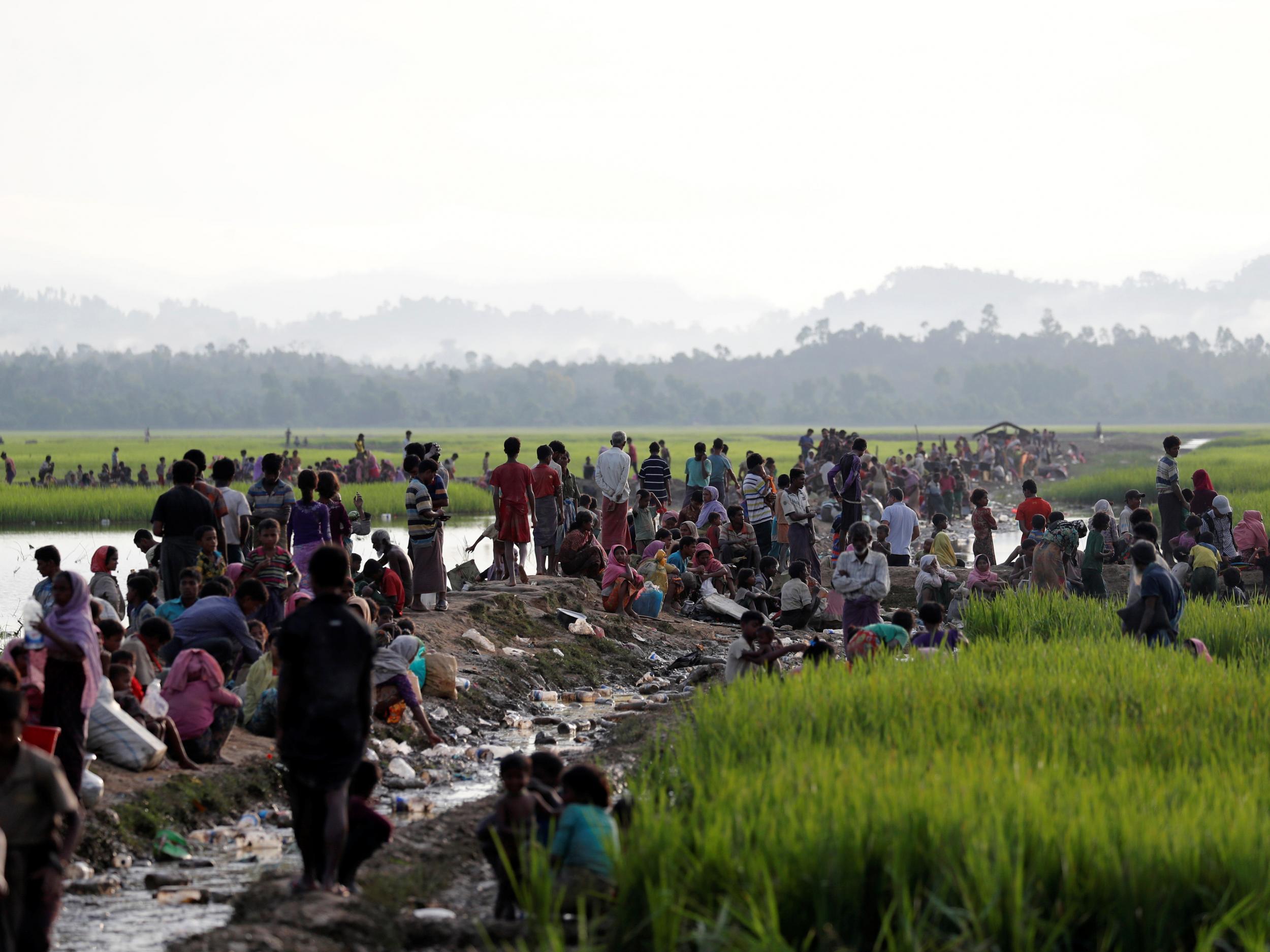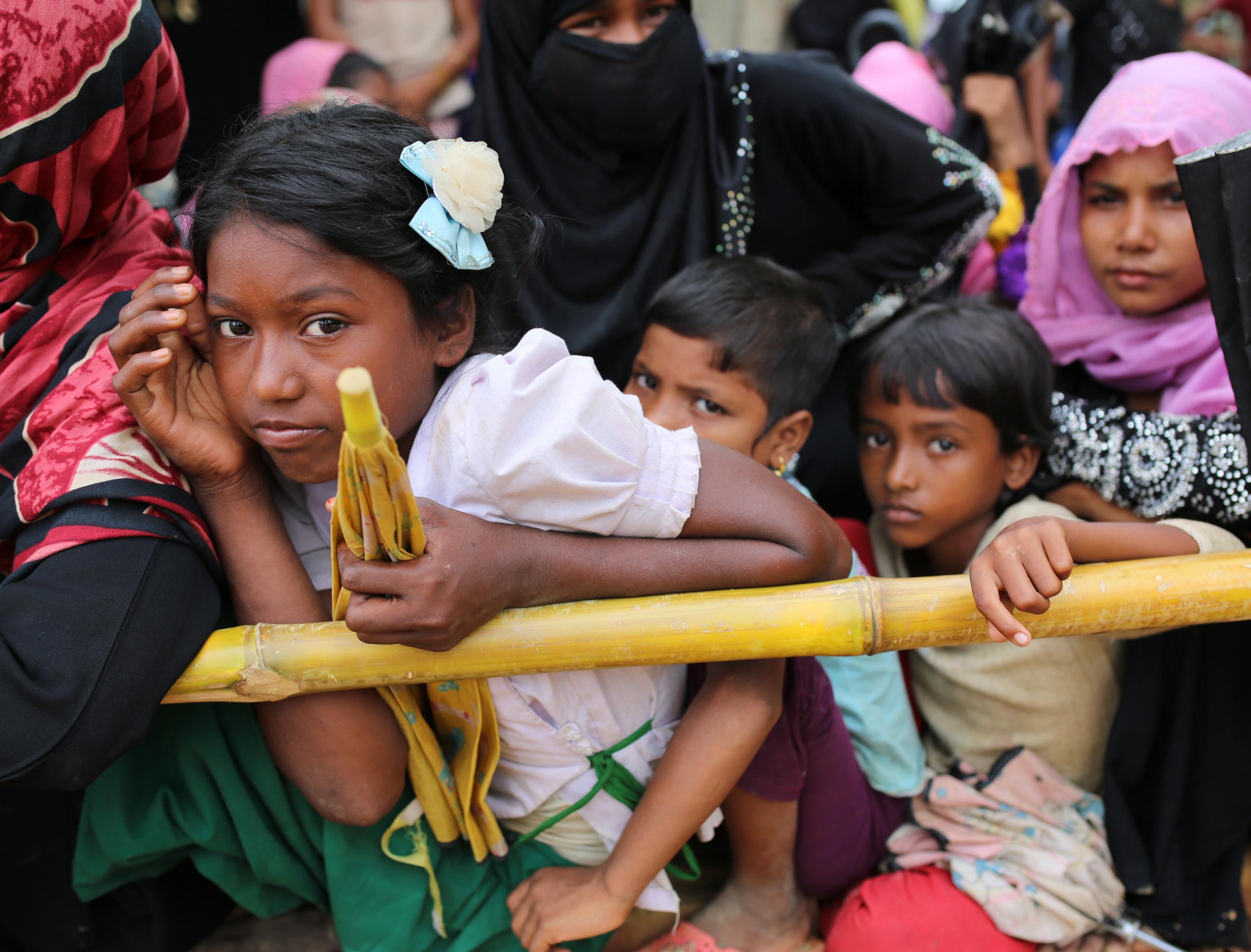Rohingya crisis drone footage shows thousands of Muslims fleeing Burma
More than half a million Rohingya are already living in squalid and overcrowded camps in Bangladesh
Your support helps us to tell the story
From reproductive rights to climate change to Big Tech, The Independent is on the ground when the story is developing. Whether it's investigating the financials of Elon Musk's pro-Trump PAC or producing our latest documentary, 'The A Word', which shines a light on the American women fighting for reproductive rights, we know how important it is to parse out the facts from the messaging.
At such a critical moment in US history, we need reporters on the ground. Your donation allows us to keep sending journalists to speak to both sides of the story.
The Independent is trusted by Americans across the entire political spectrum. And unlike many other quality news outlets, we choose not to lock Americans out of our reporting and analysis with paywalls. We believe quality journalism should be available to everyone, paid for by those who can afford it.
Your support makes all the difference.Thousands more Rohingya Muslims are fleeing large-scale violence and persecution in Burma and crossing into Bangladesh, a drone video shot by the UN refugee agency shows.
More than half a million Rohingya are already living in squalid and overcrowded camps, where they lack access to food and healthcare, officials said.
The UNHCR video shows thousands upon thousands of Rohingya Muslims trudging along a narrow strip of land alongside what appears to be a rain-swollen creek in the Palong Khali area in southern Bangladesh.
The line can be seen to stretch for several miles.

An estimated 10,000 to 15,000 Rohingya have fled since Sunday night, UNHCR spokesman Andrej Mahecic said, raising the overall total to 582,000 refugees who have left Burma since 25 August.
He said the latest influx came through the Anjuman Para border crossing point, and many of the new refugees explained they had fled when their villages were set on fire. Anjuman Para is in the Palong Khali area where the drone video was shot.
"As of this morning, they are still squatting in the paddy fields of Anjuman Para village in Bangladesh," Mr Mahecic told a news briefing.
"They are waiting for permission to move away from the border, where the sound of gunfire continues to be heard every night from the Myanmar side," he added, using an alternative word for Burma.
Violence in Buddhist-majority Burma's Rakhine state erupted after a Rohingya insurgent group known as the Arakan Rohingya Salvation Army attacked at least 30 security outposts on 25 August and the military responded with brutal attacks against the Rohingya Muslim population.
The exodus of Rohingya has continued, with a few small breaks, over the last eight weeks.
The new arrivals, almost all terrified and starving, have described scenes of incredible violence with army troops and Buddhist mobs attacking Rohingya homes.
The UN has described the violence as "textbook ethnic cleansing."

Many Buddhists in Burma call the Rohingya "Bengalis" and say they migrated illegally from Bangladesh, even though they have lived in the country for generations.
Most Rohingya have been denied citizenship since 1982 and are excluded from the country's 135 official ethnic groups, which effectively renders them stateless.
Additional reporting by AP

Join our commenting forum
Join thought-provoking conversations, follow other Independent readers and see their replies
Comments